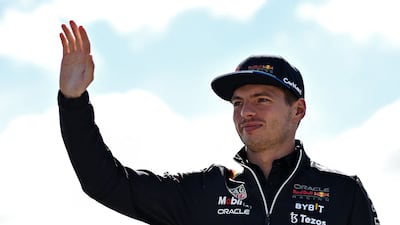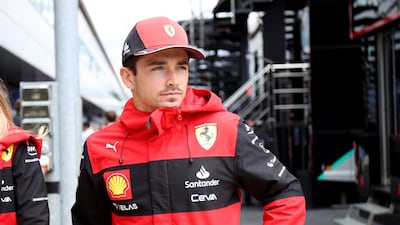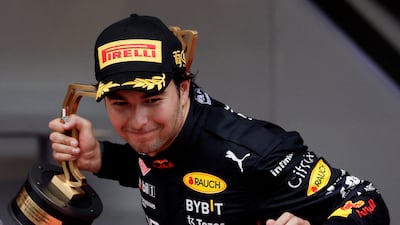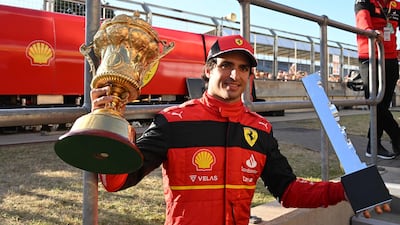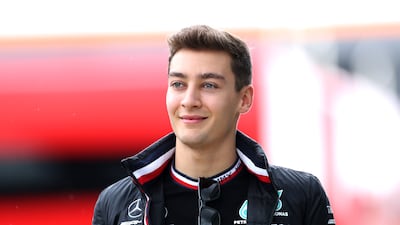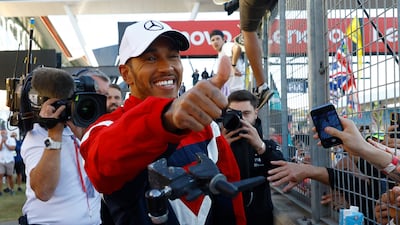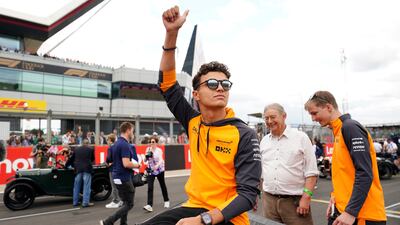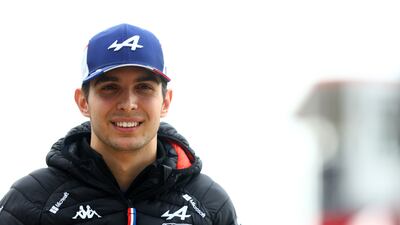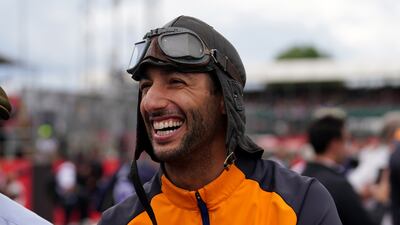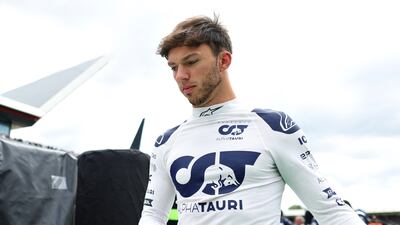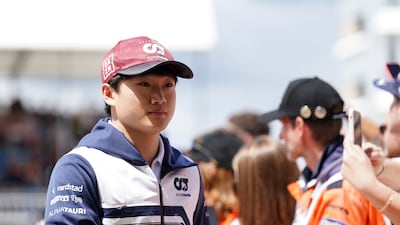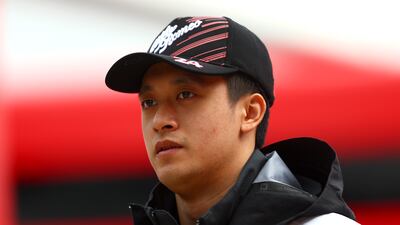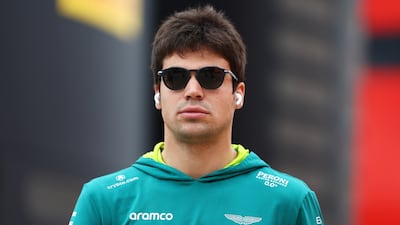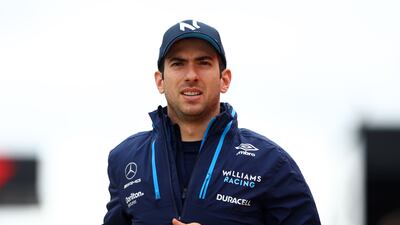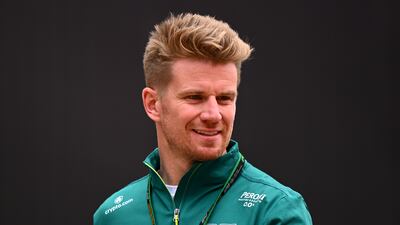The 2022 Formula One season is approaching its halfway stage and Max Verstappen is in pole position to defend his drivers' title.
The Red Bull driver, who won his maiden world championship in extraordinary circumstances in Abu Dhabi last year, tops the standings after the first 11 races having won six races so far.
The Dutchman is trailed by Ferrari rival Charles Leclerc, who shrugged off his disappointment from the British Grand Prix — where he led for much of the race until a botched tyre strategy meant he had to settle for fourth — by winning the Austrian Grand Prix.
Verstappen's Red Bull teammate Sergio Perez occupies third having won his first Grand Prix in Monaco, before finishing second at Silverstone, but a DNF in Austria dealt a setback to his title hopes.
Ferrari's Carlos Sainz sits fourth and like Perez suffered an early retirement at Spielberg the week after his maiden victory in the UK.
Fifth and sixth are occupied by the two Mercedes, George Russell leading seven-time world champion Lewis Hamilton, followed by Lando Norris of McLaren.
The full drivers' standings can be viewed in the photo gallery above. To move on to the next photo, click on the arrows or if using a mobile device, simply swipe.
Transgender report
Killing of Qassem Suleimani
National Editorial: Suleimani has been killed, now we must de-escalate
Mina Al Oraibi: Air strike casts a long shadow over the decade ahead
Jack Moore: Why the assassination is such a monumental gamble
Matthew Levitt: Iran retains its ability to launch terror attacks
Damien McElroy: A CEO tasked with spreading Iran's influence
Hussein Ibish: Trump's order on solid constitutional ground
Rashmee Roshan Lall: Sound of silence in South Asia
More on animal trafficking
Killing of Qassem Suleimani
Mina Al Oraibi: Air strike casts a long shadow over the decade ahead
Jack Moore: Why the assassination is such a monumental gamble
Matthew Levitt: Iran retains its ability to launch terror attacks
Damien McElroy: A CEO tasked with spreading Iran's influence
Hussein Ibish: Trump's order on solid constitutional ground
Simon Waldman: Cautious Israel keeping a low profile
The%20specs
On Women's Day
Dr Nawal Al-Hosany: Why more women should be on the frontlines of climate action
Shelina Janmohamed: Why shouldn't a spouse be compensated fairly for housework?
Justin Thomas: Challenge the notion that 'men are from Mars, women are from Venus'
The National Editorial: Is there much to celebrate on International Women's Day 2021?
The burning issue
The internal combustion engine is facing a watershed moment – major manufacturer Volvo is to stop producing petroleum-powered vehicles by 2021 and countries in Europe, including the UK, have vowed to ban their sale before 2040. The National takes a look at the story of one of the most successful technologies of the last 100 years and how it has impacted life in the UAE.
Read part four: an affection for classic cars lives on
Read part three: the age of the electric vehicle begins
Read part two: how climate change drove the race for an alternative
Jetour T1 specs
Engine: 2-litre turbocharged
Power: 254hp
Torque: 390Nm
Price: From Dh126,000
Available: Now
The national orchestra
• Remittance charges will be tackled by blockchain
• UAE's monumental and risky Mars Mission to inspire future generations, says minister
• Could the UAE drive India's economy?
• News has a bright future and the UAE is at the heart of it
• Architecture is over - here's cybertecture
• The National announces Future of News journalism competition
• Round up: Experts share their visions of the world to come
War and the virus
Simon Rushton: War vet raises £12m for health workers
Zayed Sustainability Prize
The Lost Letters of William Woolf
Helen Cullen, Graydon House
Terminal High Altitude Area Defense (THAAD)
What is THAAD?
It is considered to be the US' most superior missile defence system.
Production:
It was first created in 2008.
Speed:
THAAD missiles can travel at over Mach 8, so fast that it is hypersonic.
Abilities:
THAAD is designed to take out projectiles, namely ballistic missiles, as they are on their downward trajectory towards their target, otherwise known as the "terminal phase".
Purpose:
To protect high-value strategic sites, such as airfields or population centres.
Range:
THAAD can target projectiles both inside and outside of the Earth's atmosphere, at an altitude of 93 miles above the Earth's surface.
Creators:
Lockheed Martin was originally granted the contract to develop the system in 1992. Defence company Raytheon sub-contracts to develop other major parts of the system, such as ground-based radar.
UAE and THAAD:
In 2011, the UAE became the first country outside of the US to buy two THAAD missile defence systems. It then deployed them in 2016, becoming the first Gulf country to do so.
The specs
Engine: 4.0-litre V8 twin-turbocharged and three electric motors
Power: Combined output 920hp
Torque: 730Nm at 4,000-7,000rpm
Transmission: 8-speed dual-clutch automatic
Fuel consumption: 11.2L/100km
On sale: Now, deliveries expected later in 2025
Price: expected to start at Dh1,432,000
Kareem Shaheen on Canada
World Mental Health Day
• Remittance charges will be tackled by blockchain
• UAE's monumental and risky Mars Mission to inspire future generations, says minister
• Could the UAE drive India's economy?
• News has a bright future and the UAE is at the heart of it
• Architecture is over - here's cybertecture
• The National announces Future of News journalism competition
• Round up: Experts share their visions of the world to come
Fire and Fury
By Michael Wolff,
Henry Holt
FFP EXPLAINED
What is Financial Fair Play?
Introduced in 2011 by Uefa, European football’s governing body, it demands that clubs live within their means. Chiefly, spend within their income and not make substantial losses.
What the rules dictate?
The second phase of its implementation limits losses to €30 million (Dh136m) over three seasons. Extra expenditure is permitted for investment in sustainable areas (youth academies, stadium development, etc). Money provided by owners is not viewed as income. Revenue from “related parties” to those owners is assessed by Uefa's “financial control body” to be sure it is a fair value, or in line with market prices.
What are the penalties?
There are a number of punishments, including fines, a loss of prize money or having to reduce squad size for European competition – as happened to PSG in 2014. There is even the threat of a competition ban, which could in theory lead to PSG’s suspension from the Uefa Champions League.
